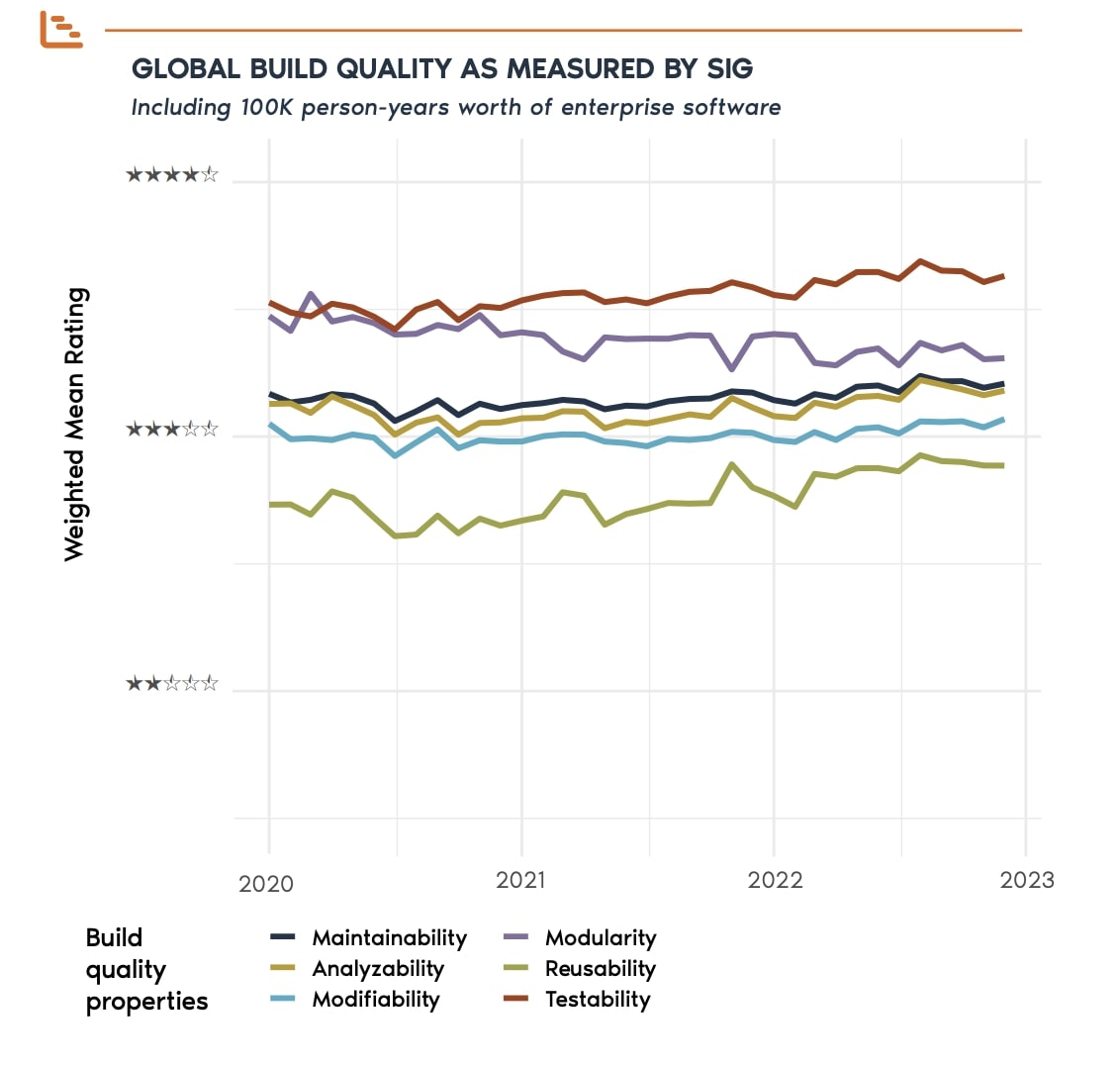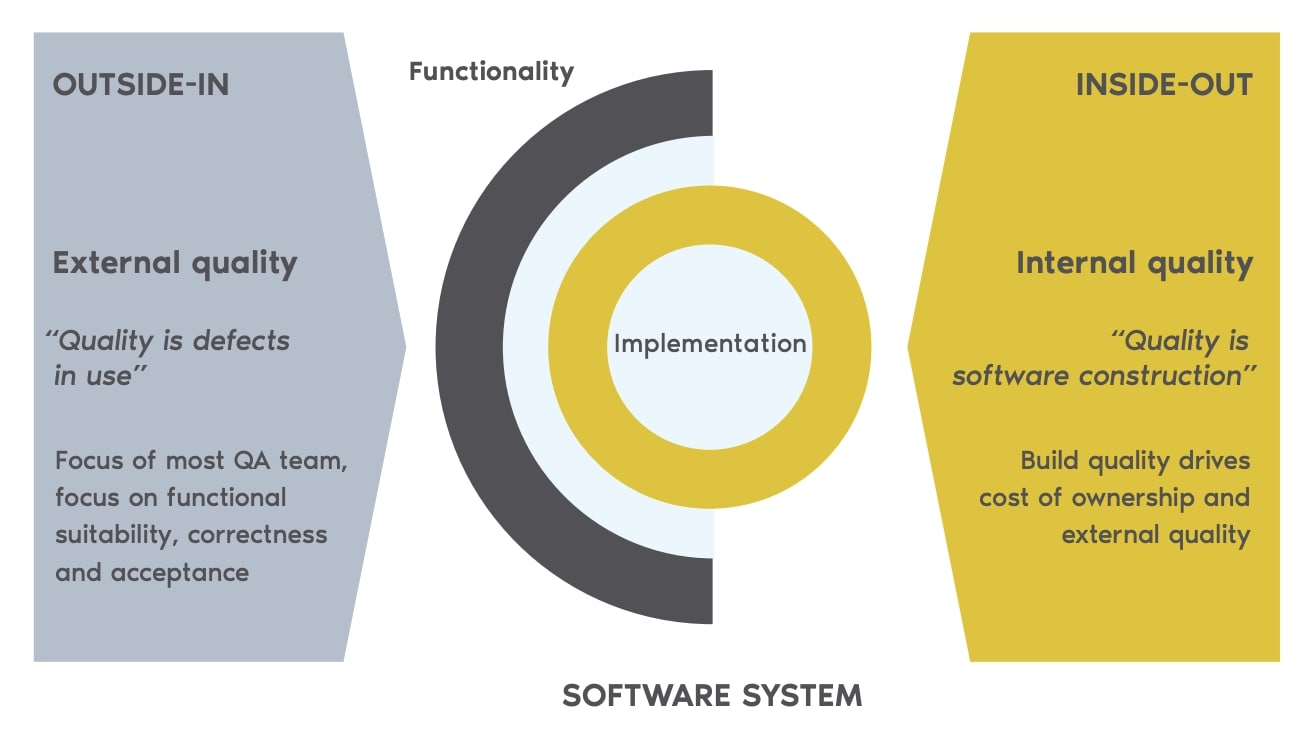
21 October 2024
Request your demo of the Sigrid® | Software Assurance Platform:

3 min read
Written by: Software Improvement Group

Marc Andreessen already observed over a decade ago that “software is eating the world”. According to a more recent McKinsey article, that observation is in dire need of an update: “software is the world”.
Today, almost every organization relies on software to run their business. And like anything that’s so pivotal, software comes with a variety of important challenges, risks, opportunities, and careful planning and budget decisions.
You could say that software –and having control over it– is at the center of any business decision.
Surprisingly, this isn’t always the case.
Often, software quality is treated as a complicated technical topic that only belongs in the IT department. It is a black box, an unknown mystery, and simply something that doesn’t have to be understood in detail, as long as it works, right?
Wrong.
While most organizations tend to focus on delivering functionality at speed. It’s important to realize that this could come at the expense of long-term quality and could expose your organization to a multitude of risks, vulnerabilities, and costs.
We can’t leave software quality and the associated risks up to chance and software build quality is an essential data point in enterprise software decision-making. Without it, you are essentially flying blind.
And having a clearer view starts by expanding the way we look at software.
In this article, we’ll break down the difference between having an outside-in and inside-out view and explain why both perspectives are necessary to harness the full potential of software in driving business success.
Globally, the enterprise software market has experienced high levels of growth in recent years, with market revenues more than doubling in the decade between 2010 and 2020.
And it doesn’t show any signs of slowing down.
According to Grand View Research, the global business software and services market size was valued at USD 474.61 billion in 2022 and is expected to reach a whopping USD 1,153.75 billion by 2030.

As a result, more and more companies are realizing that to compete and grow in a digital world, they must look, think, and act like software companies themselves. Yet, while companies seem to understand the importance of software, many still tend to look at software as a capability that they can bolt onto their existing business.
Luckily, according to our data, it’s not all doom and gloom in terms of software quality.
Our 2023 Benchmark report shows that there’s a continuing trend of gradual improvement of the main build quality properties.

Our platform Sigrid, measures maintainability and its underlying metrics for 12,000 of our client’s software systems over the years. Each year we re-calibrate our maintainability measurement model to include the latest data and to conform to the ISO/IEC 17025 standard for test and calibration laboratories. The latest model was applied to our historical data set to have a normalized view of the past year’s performance.
However, there is a continuous need to improve software to compete with the market. And this is where the ways we look at software come into play.
The way organizations tend to look at software applications is primarily focused on external quality.
Most Quality Assurance (QA) teams, focus on functional suitability, correctness, and acceptance of a software system. And quality is defined by the absence of defects in use.
While this approach should remain part of software quality assurance processes, our research shows that if you are only looking at software from the outside-in, you will spot less than 10% of potential trouble.

To fully understand the quality of a software system, it is not enough to look at the software from the outside. You need to look at the source code.
This requires a different lens, one where quality is defined by the construction of software, instead of just focusing on functionality metrics.
With the ever-increasing reach of software, active control of quality – security, maintainability, architecture, performance,and scalability – is extremely important and these factors can only be seen when looking from both the outside-in as the inside-out.
In simpler terms.
Please don’t just look at the car, also look under the hood.

We live in an era where software underpins every operation within organizations, understanding and ensuring the quality of software is not just a technical necessity but a strategic imperative.
While new features and time-to-market remain extremely important for business growth, organizations should expand their focus to grow faster, build better quality software, and significantly reduce security and privacy risks.
The only way to achieve that is when we go beyond functional suitability and start looking critically at the construction of the software itself.
Author:

We'll keep you posted on the latest news, events, and publications.